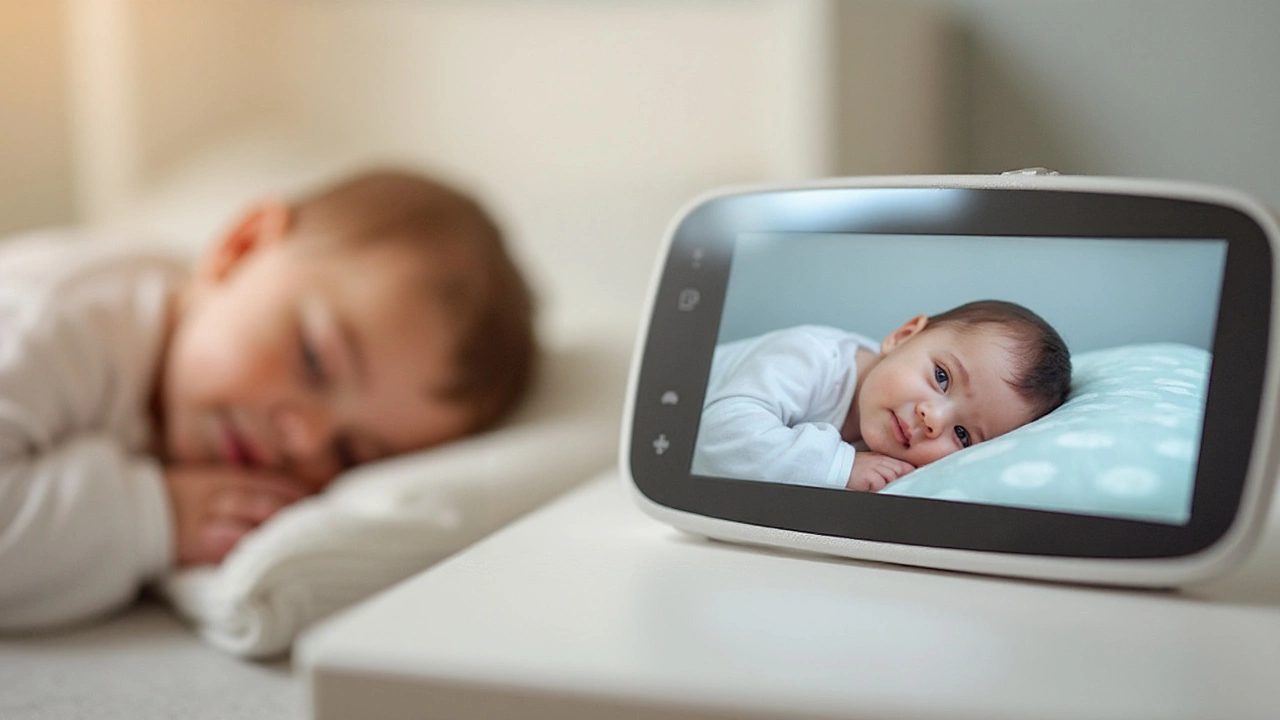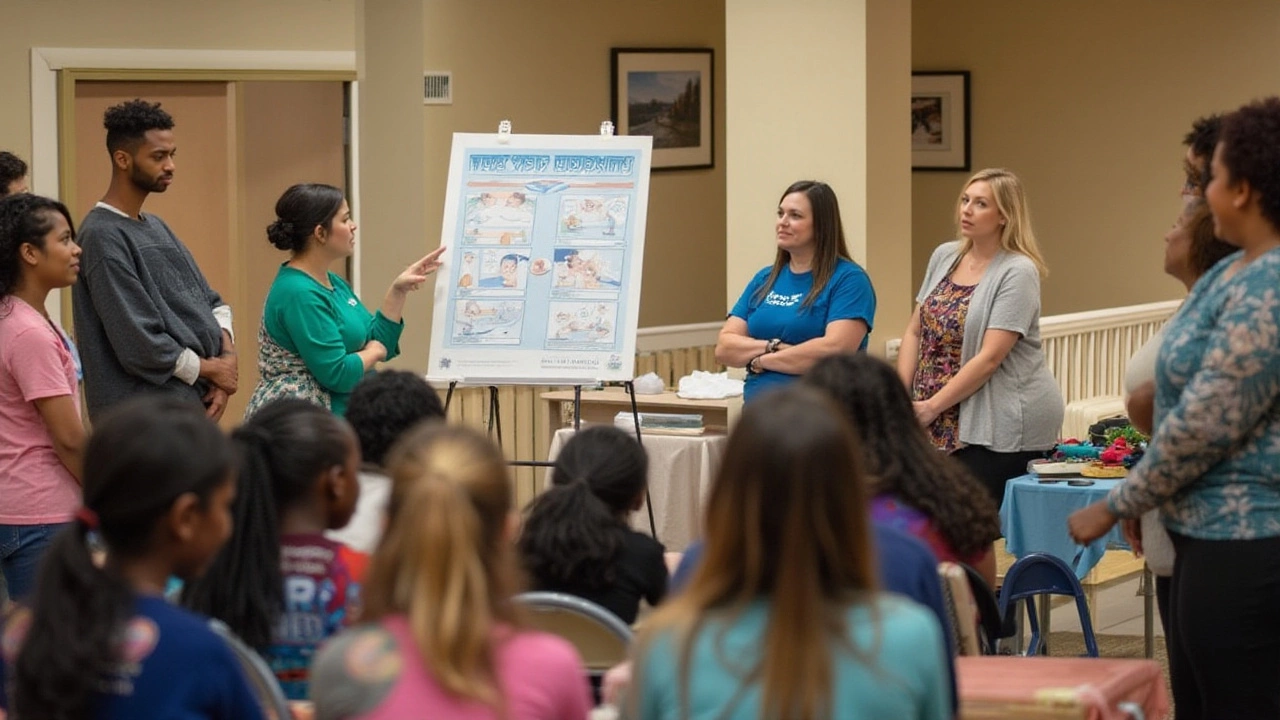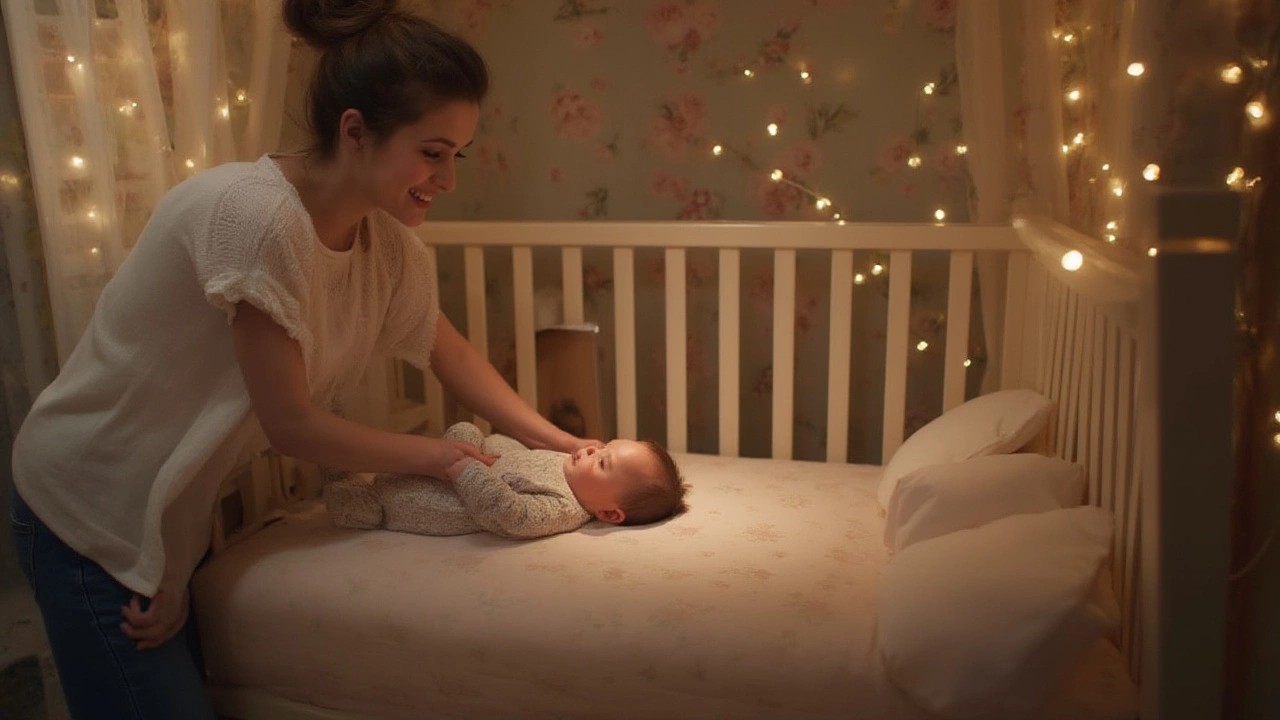Can SIDS Babies Be Revived? Understanding Safe Sleep Practices

Sudden Infant Death Syndrome, commonly known as SIDS, is a haunting term for many parents. It refers to the inexplicable death of a seemingly healthy baby, usually during sleep. Despite advancements in medical knowledge, the precise causes of SIDS remain elusive. This uncertainty often leads to a pressing question: can a SIDS-stricken baby be revived? Unfortunately, in most cases, SIDS is not a condition from which a child can be resuscitated, making preventive measures all the more critical.
Parents worldwide are urged to follow safe sleep guidelines to reduce the risk of SIDS. This includes the careful selection and use of baby blankets, which can play a substantial role in ensuring infant safety. While some might view these guidelines as restrictive, they are vital for safeguarding the youngest members of our families. As we explore the realities of SIDS further, we will discuss the importance of creating a safe sleep environment and educating ourselves and our communities about this crucial aspect of child safety.
- Understanding SIDS and Its Causes
- The Role of Baby Blankets in Infant Safety
- SIDS Resuscitation: Is It Possible?
- Prevention Tips: Ensuring a Safe Sleep Environment
- Importance of Awareness and Community Education
Understanding SIDS and Its Causes
Sudden Infant Death Syndrome, or SIDS, has long been a source of anxiety and heartbreak for many families. Often referred to as 'crib death,' SIDS occurs when a seemingly healthy baby dies unexpectedly during their sleep, usually within the first year of life. This tragic event typically happens without warning and leaves no clear or immediate cause, which only contributes to the anguish experienced by affected families. Researchers have been striving to pinpoint the exact etiologies behind SIDS, but what remains universally agreed upon is that it's a complex interplay of factors rather than a single cause.
One theory links SIDS to problems in the brain regions regulating breathing and arousal from sleep. These developmental anomalies could mean that an infant doesn't wake or respond effectively to breathing challenges such as low oxygen levels. This theory is crucial, as it highlights the intricacies of how our bodies develop, illustrating just how delicate the infant stage can be. In some cases, genetic factors play a role, making some babies more vulnerable due to family history. In this realm of uncertainty, studies continually suggest that a combination of sleep and environmental factors can significantly influence the occurrence of SIDS.
Setting the stage for these environmental risks, many studies point to unsafe sleeping practices as contributing factors. Placing babies on their stomachs, using overly soft bedding, or allowing too much clutter around them increases the risk. The role of baby blankets has been closely scrutinized, as they are common in infants' sleep areas. A struggle for fresh air and overheating can be consequential due to improper blanket use. To combat these risks, understanding the statistics is enlightening. For instance, the 'Back to Sleep' campaign, initiated in the 1990s, profoundly impacted SIDS rates. Since advocating placing babies to sleep on their backs, the incidence of SIDS diminished by over 50%, a substantial drop documented across many countries.
As Dr. Rachel Moon, a pediatrician, highlights, "The significant reduction in SIDS cases post the Back to Sleep campaign underscores the importance of following safe sleep recommendations. Awareness and education are pivotal in keeping our little ones safe."
| Factor | Impact on SIDS Risk |
|---|---|
| Brain Development Anomalies | Higher Risk |
| Unsafe Sleep Environment | Increased Risk |
| Genetic Susceptibility | Potential Increased Risk |
Ultimately, recognizing and acting on known risk factors is paramount for prevention. While the cause of SIDS remains partially veiled in mystery, the insights gained through dedicated research over decades encourage actions that have already saved countless lives. It is a reminder of the importance of continued research and societal education to untangle this enigma further and safeguard future generations.
The Role of Baby Blankets in Infant Safety
Baby blankets, in their various forms and textures, are more than simple comfort items cherished by infants and adored by parents. While they evoke warmth and a sense of security, their use carries with it significant responsibilities for maintaining infant safety, particularly around sleep. Selecting the right blanket for an infant should always involve a careful consideration of how it contributes to a safe sleep environment. Safety standards have evolved significantly over the years, leading to enhanced awareness around how these seemingly innocent pieces of fabric impact the potential for SIDS.
Ensuring that baby blankets do not cover a child's face during sleep is crucial and is one of the earliest lessons imparted to new parents. This is why many experts now recommend using sleep sacks or wearable blankets instead. They mitigate risks by ensuring babies stay warm without loose fabric covering their faces, which could lead to accidental suffocation. The American Academy of Pediatrics has consistently warned against the use of loose bedding, emphasizing a bare crib environment. They note, "To guarantee maximum safety, the crib should be free of blankets, pillows, stuffed animals, and any other soft items that might pose a hazard."
The material and weight of the blanket can also play vital roles in infant safety. It's important to avoid heavy blankets that could rise up and obstruct breathing inadvertently. But it’s not just about weight—fabric breathability is equally critical. Cotton is often favored due to its lightweight and breathable qualities, reducing the risk of overheating—another factor linked with SIDS. Some manufacturers now offer blankets infused with innovative technology aimed at maintaining an ideal body temperature.
Baby blankets are loved and appreciated for their versatility. They help shield infants from harsh weather conditions and provide a soft spot for diaper changes when out and about. However, they should never be used in a way that compromises the safe sleep guidelines set out by experts. Every responsible parent and caregiver must balance the comfort these blankets provide with the potential hazards they present if used carelessly. It is a reality check that highlights the importance of constant vigilance and informed choices in childcare.
For those reluctant to part with the idea of a traditional blanket, it's worthwhile to learn techniques that are both safe and practical. Swaddling, for instance, when done properly, can be a safe practice up to a certain age. The key is to stop swaddling once the baby shows signs of rolling over, and to ensure the blanket remains snug around baby’s arms, failing which it poses a danger to the infant.

SIDS Resuscitation: Is It Possible?
When confronted with the notion of Sudden Infant Death Syndrome, the immediate question that resonates with many is whether resuscitation is feasible in such tragic circumstances. The heartbreaking truth is that once a SIDS event occurs, resuscitation often proves to be impossible. This is largely due to the fact that SIDS typically strikes without any discernible warning signs while an infant is asleep. Unlike situations involving respiratory distress or cardiac arrest, where intervention might be timely and save a life, SIDS involves a sudden and inexplicable cessation of the baby's breathing during sleep.
Experts have long studied the physiological responses associated with SIDS, attempting to pinpoint how and why this tragic incident occurs. Despite various theories suggesting causes ranging from respiratory instability to brain defects affecting breathing, no single solution has emerged. According to The American Academy of Pediatrics, prompt emergency response is crucial in many infant emergencies, but SIDS tragically remains elusive because of its sudden nature. Dr. Rachel Moon, a renowned pediatrician and SIDS researcher, explains, "SIDS is defined as the sudden death of an infant under one year of age that remains unexplained after a thorough investigation, including a complete autopsy, examination of the death scene, and review of the clinical history."
One of the most proactive approaches parents can take to prevent SIDS involves understanding the importance of the infant's sleep environment. Knowledge about how safe sleep practices and suitable baby blankets contribute to reducing SIDS risks creates an atmosphere of prevention. While the inability to resuscitate a SIDS baby can feel disempowering, focusing on what can be controlled offers a bulwark against helpless circumstances. By ensuring that a baby's sleeping space is devoid of soft objects, utilizing a firm mattress, and adhering to the 'Back to Sleep' campaign, parents can significantly mitigate risks, though not eliminate them entirely, given the unknowns associated with the syndrome.
It's crucial to keep abreast of emerging trends in SIDS research, which continually seeks to answer unresolved questions about this condition. For instance, new studies occasionally emerge linking environmental factors and genetic predispositions to the likelihood of SIDS, reminding us of the complexity and the wide net of factors potentially involved. Continual public education and awareness about SIDS remain strict priorities, as they can indirectly facilitate potential advances or breakthroughs in understanding why resuscitation isn't generally viable. The communal effort to share knowledge and abide by recommended practices remains an indispensable tool in fighting against this tragic ailment.
Prevention Tips: Ensuring a Safe Sleep Environment
Creating a safe sleep environment for your baby is a top priority for parents aiming to minimize the risks associated with SIDS. The foundation of a safe sleep setting begins with the location. Experts recommend always placing the infant on their back for every sleep period, be it a nap or through the night. This position significantly reduces the chance of suffocation and is backed by extensive research. The crib should be entirely clear of soft objects, toys, and loose bedding, including bulky baby blankets, which can lead to accidental smothering. Instead, dress your baby in a sleep sack if additional warmth is needed, thus avoiding the risks that loose blankets pose.
Ensuring your infant's sleep area is free from potential hazards involves mindful observation and adjustments. It’s advised that the baby sleeps in the same room as the parents for at least the first six months, as this can lower SIDS risk by up to 50%. Importantly, this does not mean sharing the same bed, which remains a significant risk factor. Instead, a crib or bassinet close to your bed is ideal. The crib mattress should be firm and tightly fitted with a crib sheet. Steer clear of soft surfaces such as couches or armchairs for sleep, which can be dangerous. Staying vigilant about your baby's surroundings can make a world of difference in ensuring their safety.
A critical aspect of maintaining a safe sleep environment is monitoring the room's climate. It's essential to create an atmosphere that is neither too hot nor too cold. A comfortable room temperature is usually between 68-72°F (20-22°C). Overheating is a known risk factor for SIDS, and keeping the room at an optimal temperature helps your infant sleep soundly while preventing potential dangers. If you’re unsure, check your baby’s chest or back to ensure they’re comfortably warm. A ceiling fan might be useful as it can improve airflow and has been associated with a decreased risk of SIDS.
To achieve the perfect sleep environment, investing in a reliable baby monitor can give parents peace of mind. These devices range from basic audio monitors to more advanced versions with movement or breathing sensors. Although not foolproof, they offer an additional layer of reassurance. Parents should also make sure their infant has regular checkups with a pediatrician who can provide guidance tailored to their child's specific needs. Staying informed and proactive about infant safety is an ongoing journey but one well worth undertaking.
Educating other caregivers about your child's needs is another pivotal element. Everyone involved in your baby's care, from grandparents to babysitters, should be aware of the dos and don'ts of safe sleeping practices. Consider defining clear instructions and sharing them with anyone who may put your baby to sleep. Communication is crucial, and ensuring everyone is on the same page helps protect your baby and eases your own worries.
"Research continually demonstrates the impact of preventive measures. Adhering to these principles not only reduces the risk of SIDS but also fosters a secure environment where infants can grow and thrive." - Dr. Jane Smith, Pediatric Sleep Specialist
Remember, creating a safe sleep environment is a multifaceted task rooted in consistency and awareness. Parents and caregivers must remain informed of the latest guidelines and research on infant safety. By integrating these crucial steps into your daily routine, you not only help keep your baby safe but also cultivate a nurturing environment for your little one to dream and grow. Your attention to detail in these early months can have a profound impact on your child's lifelong health and well-being.

Importance of Awareness and Community Education
Understanding the origins and causes of SIDS, as well as spreading that knowledge, plays a vital role in reducing its incidence. The journey toward minimizing the risk begins with awareness, not just on an individual level but within communities. For many parents, the unfamiliarity with sleep safety guidelines can result in unintended oversights. That's why educational initiatives, both formal and informal, are crucial. They empower families with the knowledge to create safe sleeping environments and recognize risky practices. Perhaps one of the most impactful elements of these educational efforts is the delivery of this knowledge through health providers, parent groups, and community resources. Hospitals and pediatricians often give the first line of education. Support groups and online communities follow, reinforcing the vital need for continual learning and sharing. Real change happens when everyone, from parents to caregivers, embraces these practices as standard, not optional.
Community education can take many forms. Neighborhood workshops led by healthcare professionals, for instance, are effective in both rural and urban settings. These gatherings provide a shared space where questions can be answered in real-time, and myths can be dispelled. Hands-on demonstrations such as how to properly swaddle an infant or position them in a crib free of unnecessary items, including toys and bulky baby blankets, can make a lasting impression. In these teachings, parents can also learn about temperature regulation to prevent overheating, another risk factor associated with SIDS. Moreover, social media platforms have become powerful tools in disseminating valuable information worldwide. Campaigns run by organizations like the American Academy of Pediatrics use these channels to reach broader audiences, effectively spreading the message about safe sleeping practices.
A pivotal aspect of increasing awareness involves empowering parents to advocate for themselves and their babies. This includes understanding and referencing guidelines, such as the 'Back to Sleep' campaign, which has been instrumental in decreasing SIDS rates since its inception in the 1990s. Parents must feel confident in questioning and verifying information they encounter in various sources. Not every piece of advice will hold validity; hence, understanding primary guidelines ensures parents separate credible information from unfounded advice. Schools and parenting classes introducing this topic early on also contribute to a foundational understanding that prepares future parents before they even have children. A focus on preemptive education fosters a well-informed society ready to combat SIDS with collective knowledge.
"Education is the most powerful weapon which you can use to change the world." - Nelson Mandela, this quote resonates strongly with SIDS awareness, as informed communities become the catalyst for change, reducing risks through shared understanding and proactive measures.
In conclusion, infant safety should be a shared responsibility, with community-driven initiatives leading the charge. By consistently reinforcing safe sleep principles and maintaining open channels for support, communities build a strong protective net around their youngest and most vulnerable members. Those efforts, simple in gesture yet profound in impact, may be all that stands between a baby's safe sleep and a SIDS tragedy.

